No one talks about it openly, but choosing the right roof replacement contractor in Florida can determine whether your house survives a hurricane or crumbles in a storm. Shocking, right?
With weather patterns becoming more unpredictable than ever, securing your home with a durable roof is not just a choice but a necessity. Your peace of mind starts with a simple decision.
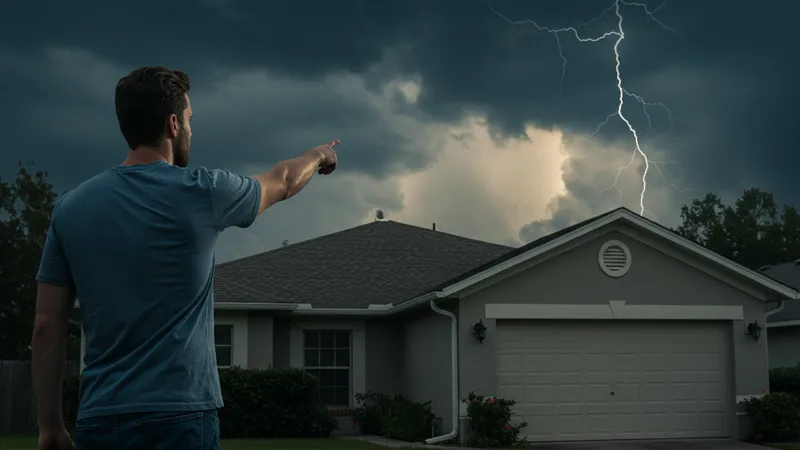
Studies have shown that most Floridians are unprepared for the next big storm, mainly due to choosing inexperienced contractors at cheap rates. But hiring an unskilled team can be disastrous — roofs installed without proper sealing are prone to leaks and collapse under pressure. The twist? Some contractors lure customers with too-good-to-be-true offers, only to deliver subpar performance. But that’s not even the wildest part...
Even experienced contractors often overlook a crucial element in roofing—correct ventilation. Lack of proper ventilation can transform your roof into a ticking time bomb, encouraging mold growth and structural damage over time. Many homeowners are unaware and end up paying double. But could the key to avoiding disaster really be this simple? The answer might surprise you.
What happens next shocked even the experts—a simple check can save thousands in repairs down the line. Get ready; we’re about to delve deeper, and what’s coming next will change the way you look at roofing forever...
It’s tempting to opt for the cheapest estimate when looking for roofing services, but this decision often leads to hidden costs down the line. One main issue is poor-quality materials. Contractors advertising bargain prices frequently cut corners by using substandard materials that won’t withstand Florida’s harsh weather. Homeowners find themselves paying more for repeated repairs, far exceeding the initial investment in quality roofing. But here’s the kicker: many contractors know this but keep quiet for the sale.
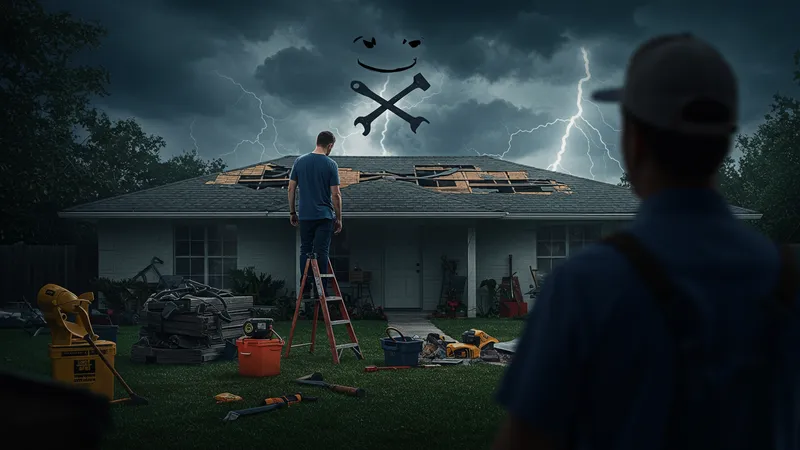
Then there’s the issue of warranties. Reliable contractors offer robust warranties, providing a safety net for potential defects. However, budget contractors might present vague warranties or none at all—leaving you without correction options if problems arise. It’s a gamble that might seem worthwhile, but once the realization hits, it’s often too late to change tracks. There’s a more cost-effective way that’s often overlooked.
Inconsistency in labor quality is another problem with cheaper options. An untrained crew might install a roof quickly, but they may overlook critical steps in the process, akin to leaving with a ticking time bomb over your head. You expect durability and safety from your roof, not surprises on your next rain-soaked morning. Discovering quality doesn’t always have to come at a premium has electrified community forums with exciting reveals.
The solution lies in research and time investment. Many homeowners bypass this step due to time constraints. Fortunately, tools like Angie's List and the Better Business Bureau make vetting easier and faster. With these resources at your fingertips, you eliminate a massive risk while ensuring your investment is protected. The next revelation may rewrite how you evaluate potential contractors.
Before signing on the dotted line, there’s a fundamental question most homeowners forget to ask: “Can I see your insurance certificate?” An experienced and accountable contractor should easily provide proof of insurance—covering not just potential damages but also worker injuries on your property. Failing to verify this can land you in hot water with substantial financial liabilities.
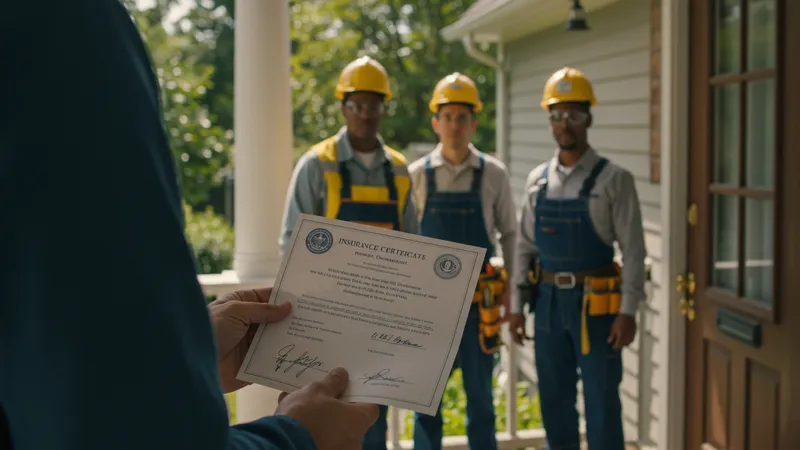
Another vital inquiry pertains to subcontractors. Many companies employ external teams without notifying homeowners, impacting the consistency of work. Ask specifically if third-party teams will be involved and, if so, request their credentials and experience details. This step assures you that every person working on your home meets a set standard.
Discussing the timeline is equally crucial. Florida weather is notorious for unexpected downpours, and a clear timeline accounts for potential delays. Ensure your contract specifies conditions under which delays are acceptable and how they influence the overall timeline. Ambiguity in this area can lead to prolonged projects, linking your home to continuous work zones unnecessarily.
Finally, inquire about the ventilation strategy from the outset. As mentioned earlier, improper ventilation leads to significant problems in the future. A trustworthy contractor should provide a detailed ventilation plan, integrating it with the roofing solution to ensure longevity. Recognizing these pointers in advance equips you with a shield against potential pitfalls. Prepare for a game-changer next—an overlooked element that just might be crucial to your roofing project.
When it’s about roofs, the ultimate test is how well it stands up to Florida’s unpredictable weather. It’s not simply about how it looks, but how it performs under duress. Most casual observers don’t realize that some roofs, while aesthetically pleasing, fail dramatically in functionality when faced with hurricanes. Selecting materials with storm resilience is a game-changer in surviving nature’s whims.

Metal roofing, for instance, is gaining traction due to its durability against extreme weather. Though initially a higher investment, its longevity offsets additional costs. Unlike traditional shingles, metal offers an impressive lifespan, repelling elements with ease. Yet, there’s little awareness about its sustainable nature, making it an unconsidered option for many.
The finish or coating on roofing materials plays a vital role in weather resistance. UV protection is imperative, especially in Florida, where the sun is relentless. Reflective roof coatings not only enhance lifespan but also reduce energy bills through improved insulation. This dual benefit makes exploring coating options a wise decision, with many homeowners witnessing significant savings.
Lastly, the role of advanced technology, like impact-resistant materials, is pivotal. It’s astonishing how much progress has been made, creating stronger and lighter materials that withstand heavy impacts. Employing these technologies means a traditional storm doesn’t spell disaster, reinforcing the durability you thought was unattainable. Yet, a commonly ignored aspect further complicates the decision—one that could save or sink your investment.
Despite its importance, contractor licensing is frequently misunderstood, leading to homeowners inadvertently hiring unqualified contractors. Mistakenly equating an occupational license with a contractor license is a prevalent pitfall. Only the latter ensures skills and knowledge are verified by state authorities. Yet time and again, people skip this verification out of trust or pressure.
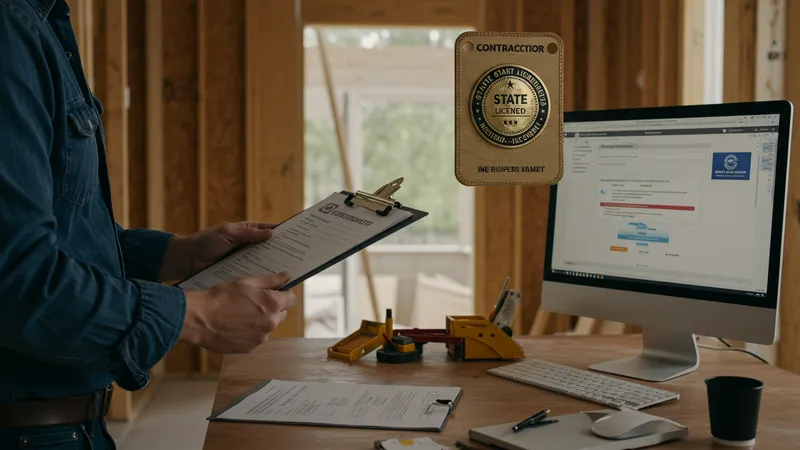
The significance of maintaining an updated license is often dismissed. Some contractors reapply licensure only when work is slow, leaving gaps where the license is inactive or expired—a serious risk that should be unacceptable to any homeowner. Confirming the validity of licensing through state websites offers a simple yet effective safety net.
A surprising number of contractors flaunt credentials not applicable to roofing. It’s crucial to confirm that the licensure specifically relates to roofing, as diverse specialties require different licensing standards. This oversight becomes a massive liability when work starts and issues arise, prompting a question we don’t ask enough: “Is licensure specific and current?”
Another unknown is how licensure impacts insurance policy obligations. Many homeowners’ insurance policies have provisions tied to the use of licensed contractors. Hiring improperly licensed roofing contractors might lead to claims being denied, a nasty surprise when seeking coverage. Once you know this, the approach changes dramatically as you anticipate the biggest strategic shift in hiring services yet.
As climate change drives more intense weather conditions, eco-conscious homeowners are gravitating towards sustainable roofing solutions. This shift doesn’t merely cater to the environment but provides tangible benefits like lower energy costs. Choosing eco-friendly options, such as recycled shingles or solar tiles, puts homeowners at the forefront of innovation.
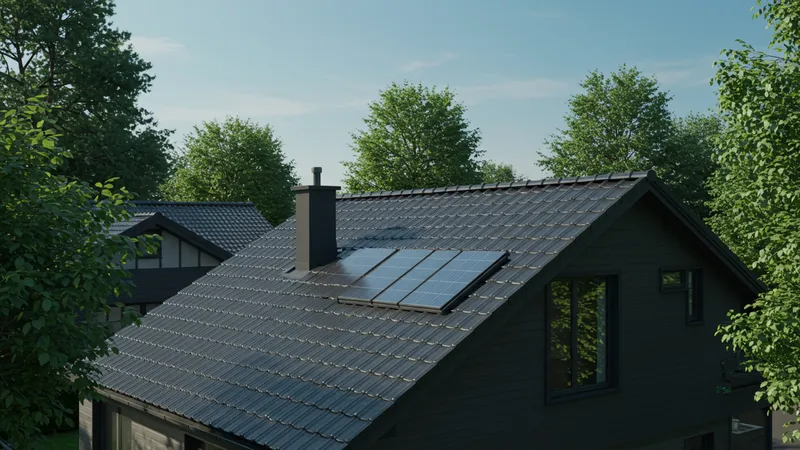
Solar roofing tiles deserve special mention here. Though the initial installation might be pricey compared to non-renewable solutions, energy savings and potential tax incentives pave the road to a return on investment. Yet, many homeowners are unaware of their availability or underutilize them due to misconceptions around complexity and maintenance.
Sustainability in roofing also extends to using sustainable materials beyond just energy generation. Clay and concrete tiles, known for their longevity, reduce replacement frequency, thereby conserving resources. This passive consideration of the material’s lifecycle can have impactful ecological benefits over decades, something increasingly sought in today’s green movement.
Additionally, reflective roofing options play a part in sustainable living by reducing cooling needs indoors. This method not only advocates for sustainability but also alleviates the financial strain of air conditioning. As the conversation around climate grows, these options will become not just beneficial but necessary. Stay tuned for how incorporating technology alongside awareness creates unexpected savings.
The daunting cost of roof replacement can feel insurmountable, leaving many opting for less than optimal solutions. Contrary to popular belief, multiple financial options exist to facilitate acquiring the right roofing. Understanding loans, tax incentives, and grants can shift the financial burden significantly.
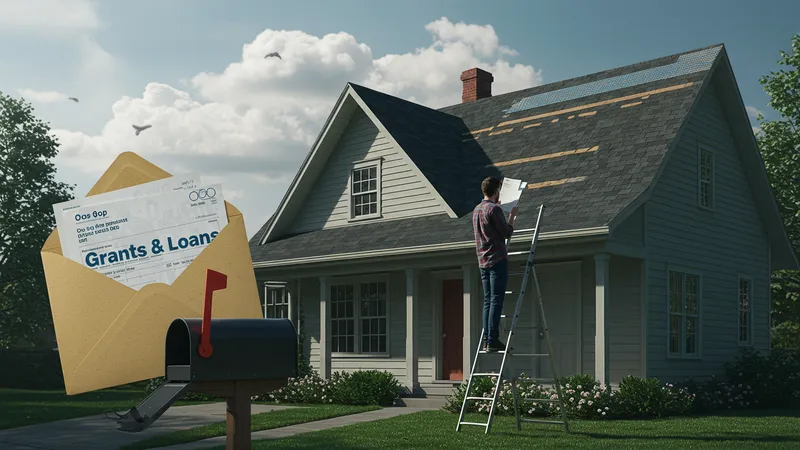
Federal and state programs often extend grants or low-interest loans for home improvements, especially those in disaster-prone areas. Investigating eligibility for such support takes effort but can save thousands. Yet, precious few homeowners attempt this, missing chances at affordable quality.
Tax incentives can provide significant savings by encouraging specific sustainable practices. Opting for roofs that focus on energy efficiency or using solar energy can lead to substantial rebates. This concept is largely underestimated and underutilized, flying under the radar despite the potential financial relief it offers.
Insurance policy riders might also provide leverage. Some companies credit policyholders who proactively mitigate damage through quality home repair, including roofing. At times, insurance even covers specific work cost completely if deemed preventive. While it takes courage to dive into insurance specifics, it can make the difference during recuperation moments from roof repair projects. The next insight might refine your financial strategy further.
When embarking on a roof replacement, having realistic expectations around timing is crucial. Most assume a quick turnover once a contractor is hired, but Florida weather often throws a wrench in project timelines. These delays, though common, catch many off guard, prolonging completion beyond estimates.
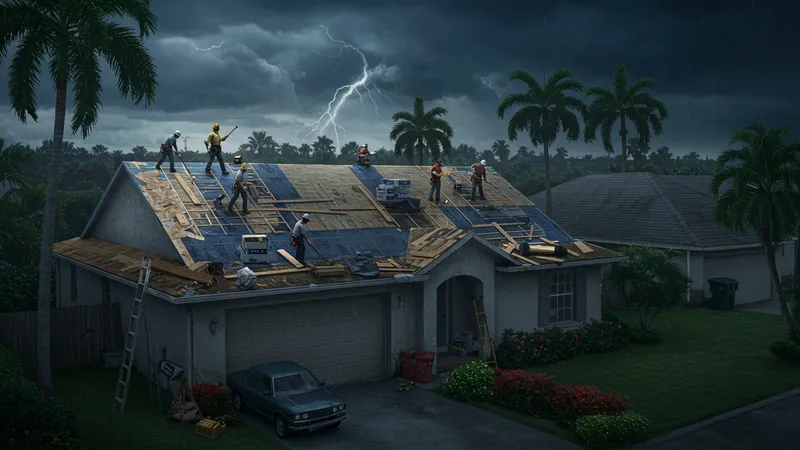
The typical replacement project takes around two weeks under ideal conditions. However, unexpected rain or hurricanes can indefinitely interrupt progress. Preparing yourself for these eventualities with phased check-ins keeps you informed and less frustrated about unavoidable pauses.
Scheduling well in advance mitigates some weather-related risks. Engaging with contractors during seasons known for milder weather, such as early spring or late fall, circumvents typical delays. Unfortunately, contractors’ busy periods coincide with this, leading to immediate schedule blocks for prime slots. The ingenuity lies in planning strategy.
Material delivery delays also impact timelines more often than anticipated. Contract provisions should include clauses outlining contingency plans for such instances, offering clarity despite hitches during execution. Recognizing that these factors control much of the schedule keeps expectations grounded. With this, explore how your timeline affects pricing and quality.
The allure of DIY projects is strong, especially when faced with the high cost of professional roof replacement. However, the skills required to replace your own roof are extensive. Beyond hammer and nail, understanding roofing principles and safety measures is imperative, a step often underestimated by enthusiasts.

DIY work can inadvertently void home warranties or violate homeowners’ association regulations. These constraints leave many projects abandoned or halted halfway when complexities arise, leaving homeowners vulnerable. Understanding limitations enables confidence in delegating critical home repairs.
Quality assurance is one primary reason to consider professional help. It ensures that the roofing job meets regulatory codes and standards, protecting your home’s value and ensuring safety. Shortcuts can result in catastrophic failures during turbulent conditions, a nuance professionals skillfully navigate.
Attempting a DIY approach might save money but comes with significant risks. Discovering under the radar of professionals can derail projects more often than anticipated. Hiring professionals initially may result in a smoother, shorter timeline, saving unexpected corollary costs. Before blindly deciding, weigh realism against ambition for effective outcomes.
The roofing industry, traditionally stagnant, is undergoing radical changes with emerging technologies. Advanced simulation software now allows homeowners to visualize options and impacts before committing. Eliminating guesswork with precise overlays of material and design can revolutionize planning.
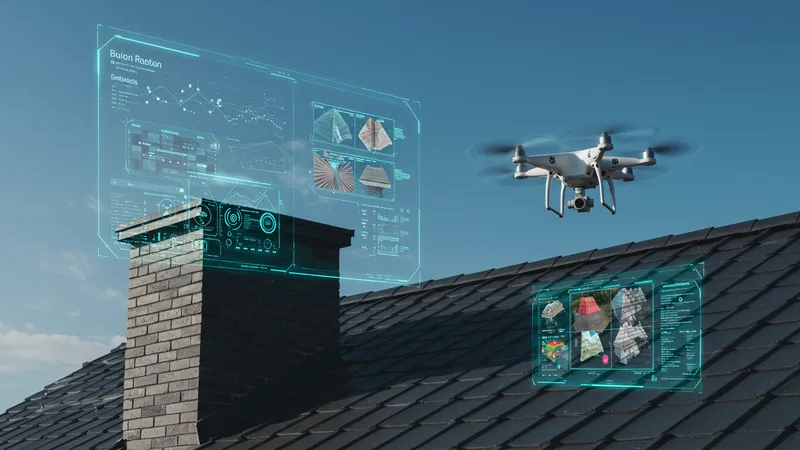
Drone technology introduces a new layer of accuracy in assessments. These devices survey roofs more rapidly and safely than manual inspections, offering detailed insights into possible weak points invisible to the naked eye. Utilizing their analyses minimizes surprise repairs down the line.
Moreover, smart materials imbued with sensor technology report structural health back to databases, alerting abnormalities like early-stage water damage or wear signs. This proactive approach transforms regular maintenance, heralding a new age in home care redefining durability.
These investments come at a cost, but the savings on unforeseen repairs can outweigh initial price tags. Next-generation roofing intertwines with technology, promising a long-lasting investment. Stay updated as innovation alters home construction paradigms, offering more than traditional wisdom applied in modern scales.
Common myths about roofing persist primarily due to a lack of accessible information. One such myth holds that roofing can be done at any time. While it is true that technology allows roof installation year-round, temperature, and weather conditions significantly impact efficiency and adhesion quality.
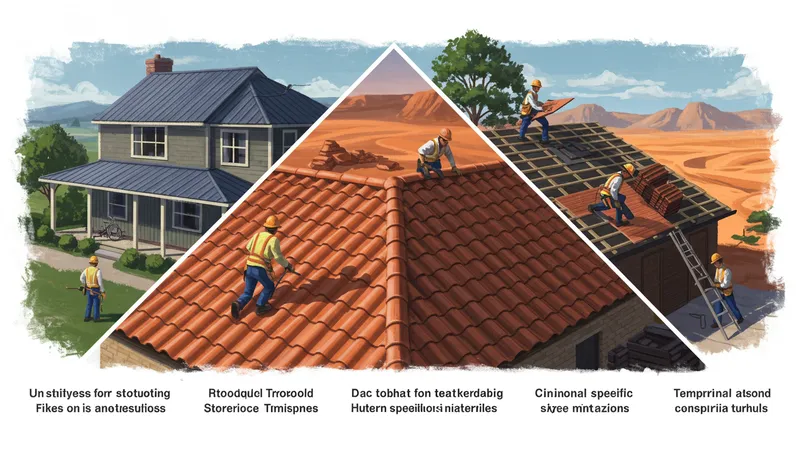
The “one-size-fits-all” mentality in terms of climate-specific roofing is misleading. Climate conditions dictate material suitability—such as installing metal roofs in hurricane zones or clay tiles in arid regions. Choosing based on pure aesthetics can lead to premature failure or stark maintenance challenges.
Another myth is assuming that minor leaks don’t require immediate attention. Delays in addressing leaks lead to extensive damage internally and high repair costs. Early intervention for even tiny leaks is critical in maintaining roof integrity.
Lastly, many believe insurance will automatically cover all roof damage. This is conditional, depending on various factors including the age of the roof, type of damage, and maintenance records. Assuming full coverage without specialized discussions with insurers can be financially risky. Get ready to discover a tactic shifting homeowner strategies that surprises everyone.
Safety in roofing is non-negotiable. The nature of the work involves heights, heavy materials, and machinery, all posing risks even to experienced workers. Therefore, observing stringent safety protocols can prevent accidents and secure a trouble-free project.
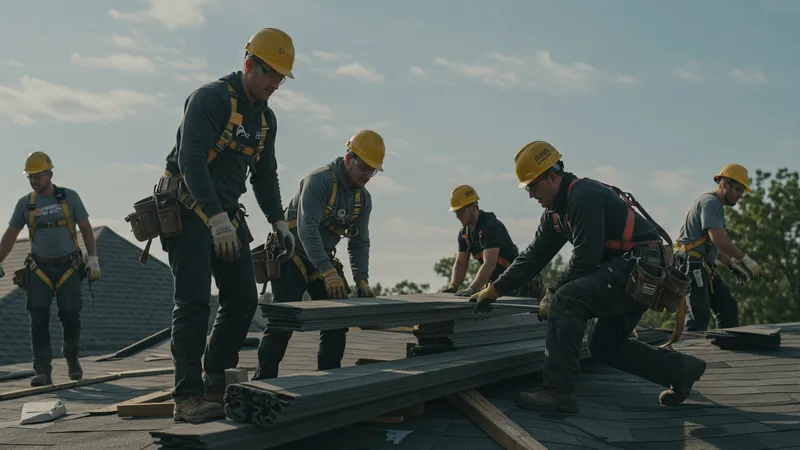
For hired teams, confirming training certifications demonstrates their commitment to safety standards. Certifications ensure that teams are equipped to prevent incidents and handle emergencies effectively, aligning with the homeowner’s values for safety and professionalism.
On a personal level, understanding safety measures enables transparent communication with contractors. Discuss precautionary tactics employed during installations, establishing alignment in expectations. A well-informed decision reduces anxieties about project safety.
Your responsibility extends beyond the roof to the neighborhood. Alert neighbors about work and possible disturbances, ensuring community support to diffuse tensions before they escalate. The goal remains simple: safety and peace of mind persist in harmony. Next, get insights into effective communication with contractors enhancing collaboration.
Establishing effective communication from the start protects both parties involved in a roofing project. It ensures clarity and shared understanding, vital for smooth execution and meeting targeted goals seamlessly.

Start by setting clear expectations in written agreements, encompassing timeline, deliverables, and financial obligations from both ends. Contracts eliminate misunderstandings while serving as a common reference point throughout the project journey.
Regular updates are essential. Request status reports or meetings outlining progress along identified timelines, maintaining a pulse on operations. These provide opportunities for addressing concerns and recalibrating plans as needed collaboratively.
Lastly, building rapport fosters trust. Being respectful and approachable might encourage openness beyond transactional interactions, allowing contractors to provide their best efforts routinely. You’ll find these interactions invaluable for navigating challenges efficiently, keeping projects on track effectively.
Understanding legal requirements is crucial to ensuring a seamless roofing project. Florida has specific laws pertinent to construction, requiring permits and compliance checks, which if ignored, can result in hefty fines or forced removals.
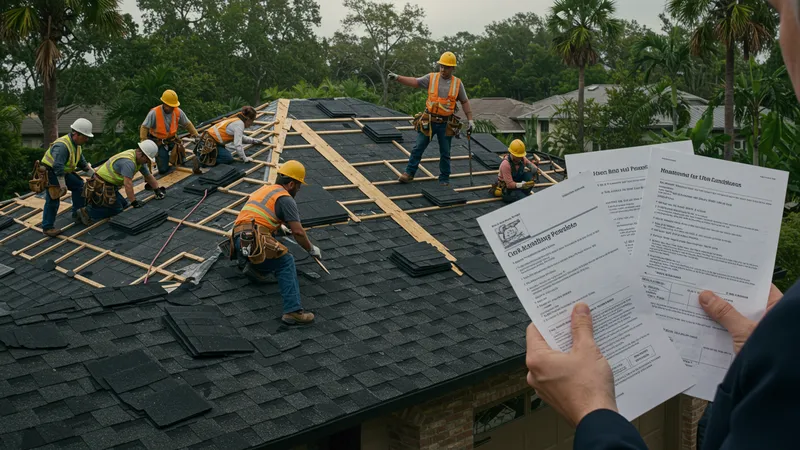
Permits are essential, and navigating the bureaucratic maze ensures that your project stays within legal boundaries. Unpermitted construction can lead to collapse and invalidate insurance claims when disasters strike unknowingly.
Warranties and service contracts must be framed accurately. Having a legal review of contractor-provided documents ensures protection from clauses loaded with loopholes that could void your insurance coverage inadvertently.
Finally, learning about lien rights protects against unexpected financial responsibilities. Verifying payments to suppliers and subcontractors confirms no liens are placed on your home post-construction. An eye on legalities provides assurance that aligns with strategic planning, building toward financial stability longer-term.
Creating a checklist addresses common oversight in hiring quality roofing contractors. Thorough vetting prevents unexpected inconveniences and misalignment of service delivery to set expectations correctly every time.
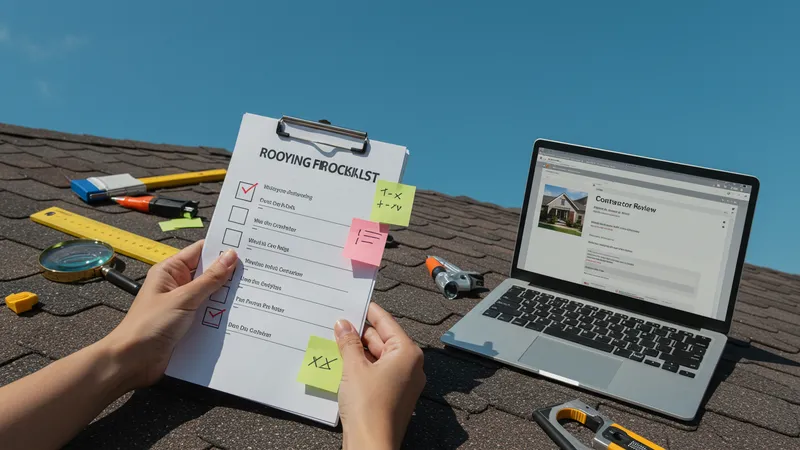
First, conduct an intensive background check, including company longevity, reputation, and client feedback. Utilize platforms like the Better Business Bureau or local directories for unbiased reviews, distancing from logo traps with unhealthy partnerships.
Next, verify licensure and insurance coverage, essential for legality and financial security. Request proof and verify details with official sources, affording you peace in confirming reliability credibly.
Remember, consultations reveal much, allowing you to gauge contractor expertise firsthand. Discuss material variety, timelines, and warranty details, observing how they address your queries, which indicates their customer-oriented resolution approach.
This preparation manifests control, taking prospective contractor selection from guesswork to precise decision-making. The finale amplifies assurance in your journey thrived on informed insights.
Despite the hurdles in navigating roofing decisions, being informed empowers success. Choosing a qualified contractor elevates your home genuinely, protecting it against future storms. Converting insights into robust decisions make the journey fruitful. Spread this knowledge within your community, entrusting them to fortify their homesteads with intelligent preparation. Bookmark these discoveries for future reference, ensuring quality forevermore in roofing pursuits.